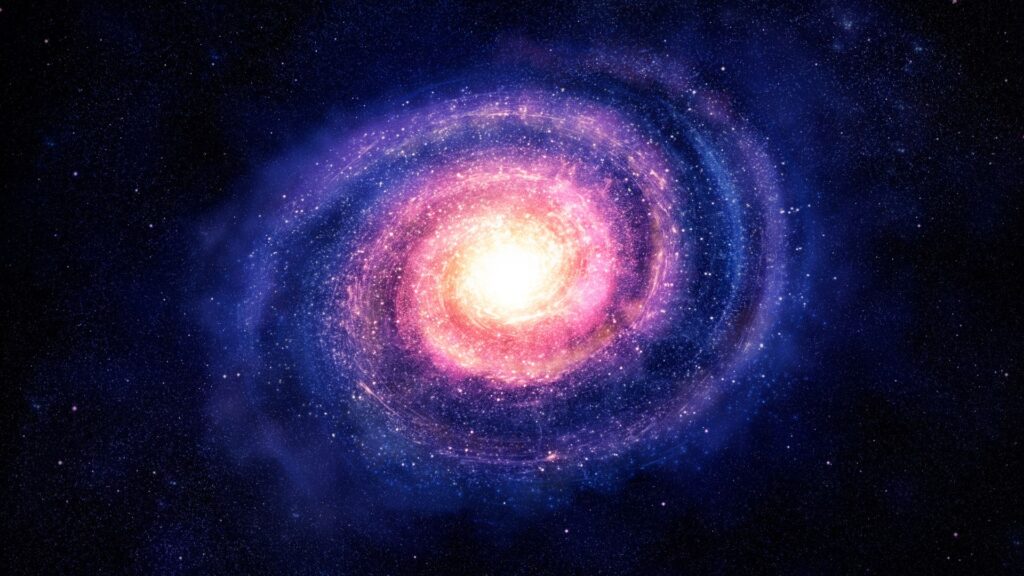
Have you ever wondered about the immense, silent dance of galaxies in the vastness of space? It might surprise you to know that galaxies, those magnificent collections of stars, gas, and dark matter, are not just sitting still but are actually in motion, gracefully spinning through the cosmic expanse. But if they’re spinning, why do they appear so still from afar? Let’s delve into this cosmic mystery.
What Exactly is a Galaxy?
Before we explore their movement, let’s understand what a galaxy is. A galaxy is a massive system of stars, interstellar gas, dust, dark matter, and other celestial bodies, all bound together by gravity. They come in various shapes and sizes, ranging from spirals like our Milky Way to ellipticals and irregular forms.
The Illusion of Stillness
When we look up at the night sky and see a galaxy, it seems like a static, frozen image painted on the backdrop of the universe. However, this serene appearance is quite deceptive. The reason galaxies appear motionless to us is due to the immense timescales involved in their movements. Imagine watching the minute hand of a clock; it moves, but at such a slow pace that it appears still when observed casually.
Understanding Galactic Rotation
Galaxies, particularly spiral galaxies like the Milky Way, rotate around their centers. This rotation is similar to how our own solar system’s planets orbit around the Sun. But unlike the planets, which we can see moving against the backdrop of stars over human lifetimes, galactic rotations occur over much longer periods—hundreds of millions to billions of years.
The Role of Dark Matter
What’s even more intriguing is that galaxies rotate so fast that, based on the observable mass (stars, gas, etc.) alone, they should be tearing themselves apart. This led astronomers to infer the existence of dark matter—mysterious, invisible material that doesn’t emit, absorb, or reflect light like ordinary matter. Dark matter provides the extra gravitational pull needed to keep galaxies intact despite their rapid spins.
The Spiral Arms and Galactic Dynamics
The rotation of a spiral galaxy like the Milky Way isn’t uniform. The inner regions rotate faster than the outer parts, a phenomenon known as differential rotation. This differential rotation is what creates and maintains the beautiful spiral arms that we observe in many galaxies. As the galaxy rotates, these arms wind up like a cosmic pinwheel.
Conclusion
So, the next time you gaze at a picture of a galaxy, remember that what seems motionless is, in fact, a celestial whirlwind unfolding over cosmic epochs. Galaxies spin, dance, and evolve in ways that challenge our perception of time and space. Their mysterious movements are a testament to the hidden complexities of our universe, waiting to be explored and understood by curious minds.
Galaxies appear stationary because their rotational speeds are incredibly slow when observed over human timescales. It’s like watching the minute hand of a clock—it moves, but you can’t see it unless you wait a long time.
Scientists use powerful telescopes to observe galaxies and analyze their light. By studying how the light from different parts of a galaxy shifts, they can determine if it’s rotating.
Galaxies spin due to the force of gravity. Just like planets orbit the Sun, stars and gas within a galaxy are pulled towards its center, causing the entire galaxy to rotate.
Yes, almost all galaxies rotate to some degree. The rotation is more noticeable in spiral galaxies, where the rotation creates the distinctive spiral arms.
Galaxies can rotate at different speeds depending on their size and mass. Some rotate faster than others, but typically, this rotation occurs over millions or even billions of years.
Galaxies don’t tear apart because of the presence of dark matter. Dark matter is an invisible substance that provides extra gravitational pull, keeping the galaxy together despite its rapid rotation.
Spiral arms are the swirling patterns seen in spiral galaxies. They are formed due to differential rotation—where the inner parts of the galaxy rotate faster than the outer parts, creating a winding effect.
We cannot directly observe galaxies rotating in real-time from Earth due to the vast timescales involved. However, scientists can detect the rotation by studying the light emitted from different parts of galaxies.
The time it takes for a galaxy to complete one rotation varies widely. For our Milky Way galaxy, it takes about 200-250 million years to make one full rotation.
Galaxy rotation plays a crucial role in the formation of stars. The rotation helps to regulate the distribution of gas and dust within the galaxy, which are the primary ingredients for star formation in regions like the spiral arms.